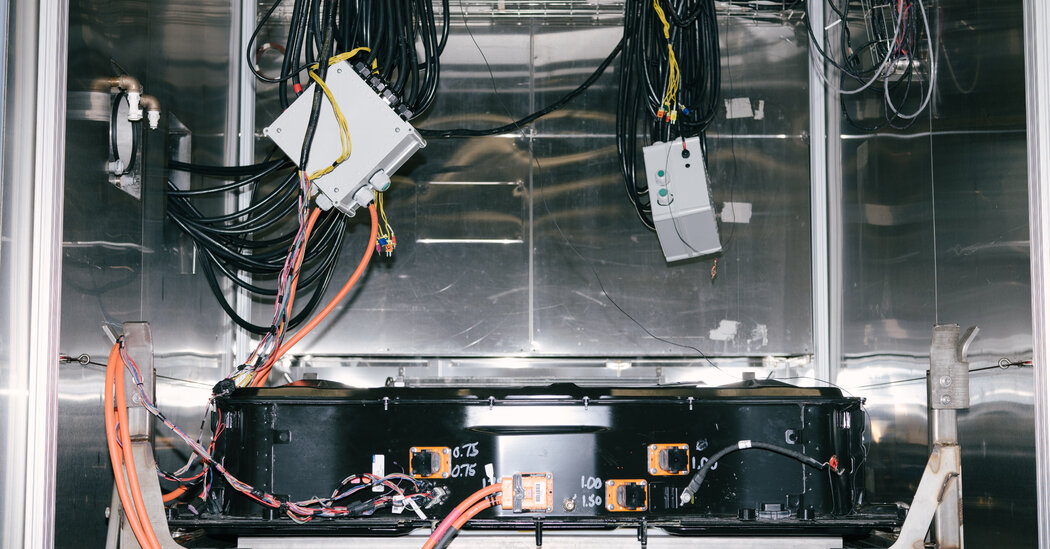General Motors is investing tens of billions of dollars to produce a slew of new electric vehicles and hopefully catch up with Tesla.
But the automaker looks a long way from meeting those ambitious goals. This year it is struggling to produce a new type of electric car battery pack intended for the electric vehicles it plans to introduce in the coming years.
“It was a little challenging,” the company’s chief financial officer, Paul Jacobson, said on a conference call with reporters Monday afternoon.
In the first half of this year, GM built just 50,000 electric vehicles, and most of them used an older battery pack from a supplier. In the United States, GM sold fewer than 2,800 vehicles that used its new, modular Ultium battery packs made at an Ohio plant the company owns with LG Energy Solution. Two other Ultium plants are under construction, in Tennessee and Michigan.
GM once said it planned to make 400,000 electric vehicles in North America from 2022 to 2024, and more than a million by 2025, the vast majority of which would use Ultium technology.
Mr Jacobson said the company expected to make 100,000 battery-powered vehicles in the second half of 2023, and would provide more details on production plans on a conference call with financial analysts on Tuesday.
For now, the slow rollout isn’t hurting the company’s bottom line. GM said on Tuesday it made profits of $2.6 billion from April to June, up 52 percent from a year earlier. Sales were $44.7 billion, up 25 percent.
Mr. Jacobson said the company had benefited from higher prices and strong truck and SUV sales in North America. The average price of the vehicles GM sold in the second quarter was $52,000 — about $1,600 more than in the first quarter of the year.
GM sold 833,000 cars and trucks in North America in the second quarter, up 26 percent from a year earlier. In the rest of the world, it sold 147,000 vehicles, about 8,000 less than a year earlier.
While the strong earnings are welcome, many investors are increasingly concerned about the company’s electric vehicle strategy, as such vehicles are the fastest growing segment of the auto industry.
A major fear for investors is that GM, Ford Motor and other major automakers could quickly lose customers as more drivers buy battery-powered cars. In China, Europe and California, where electric vehicles already account for a significant and growing share of new car sales, once-dominant automakers such as Volkswagen and Toyota have lost market share to Tesla and Chinese automakers like BYD.
Two years ago, GM CEO Mary T. Barra said the company was aiming to double annual sales to about $280 billion by 2030. Much of the increased sales should come from electric vehicles and new revenue streams from software and services associated with those cars and trucks. The company has also set a goal of phasing out combustion engine models by 2035.
Right now, GM is “well behind where they should be,” said Sam Fiorani, vice president of global vehicle forecasting at AutoForecast Solutions, a consulting firm. “If they have problems with the first wave of these new EVs, and if they can’t roll them out, that’s not good for the next wave of higher volume models.”
GM currently only offers a few niche vehicles that use Ultium battery packs. They include the Cadillac Lyriq, an SUV; the GMC Hummer, which has a starting price of about $90,000; and large vans made by a new division called BrightDrop.
This summer and fall, GM would add three electric Chevrolets: the Blazer and Equinox SUVs and an electric Silverado pickup. The company had previously said the Silverado would go on sale in the spring, but the truck is now not expected until the fall.

